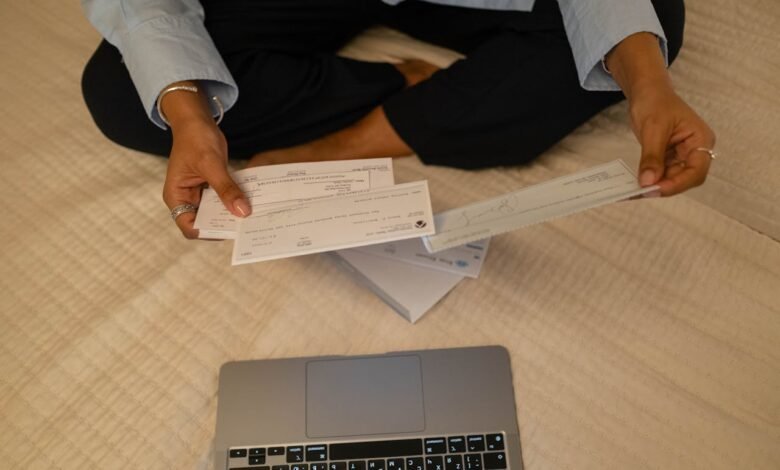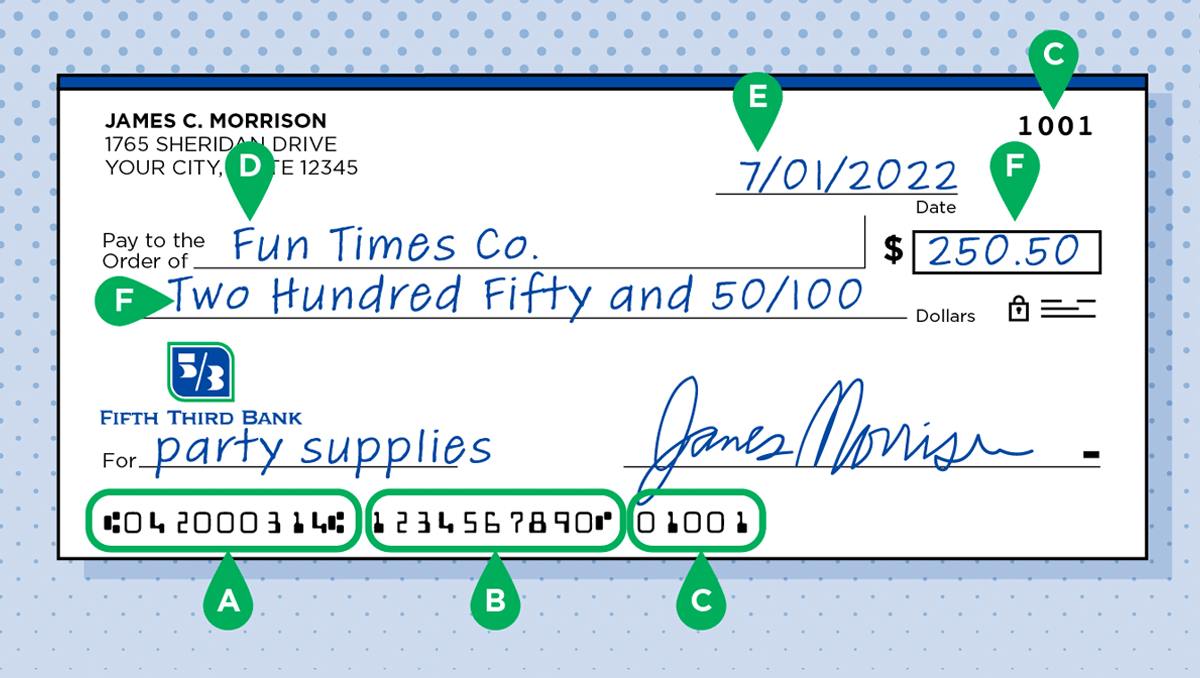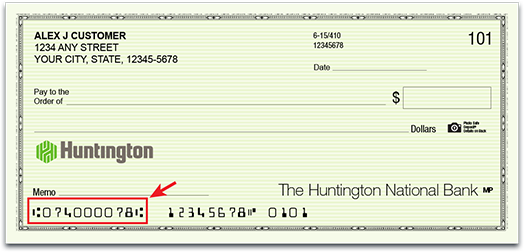How to Read a Check: Essential Tips for Accuracy

To read a check, locate the payee, date, amount, and signature on the front. Check the back for endorsements.
Reading a check involves examining the payee, date, amount, and signature on the front. Additionally, check the back for any required endorsements. Understanding the components of a check is essential for proper handling and processing. By following these steps, you can confidently read and verify the information on a check.
This knowledge is valuable for financial transactions and record-keeping purposes. Mastering the skill of reading checks is beneficial in both personal and professional settings.
Deciphering Check Layout
When it comes to reading a check, understanding the layout is essential. By deciphering the various elements of a check, you can easily identify important information and ensure accuracy. In this section, we will explore the key components of a check layout, including identifying bank information and locating the check number.
Identifying Bank Information
One of the first things to look for on a check is the bank information. This includes the name of the bank, its address, and sometimes its logo. The bank information is typically located at the top-left or top-right corner of the check.
Here is an example of how the bank information may appear:
| Bank Name | Bank Address |
|---|---|
| XYZ Bank | 123 Main Street, City, State, ZIP |
Locating The Check Number
The check number is a unique identifier for each individual check. It helps in tracking and organizing your financial transactions. You can find the check number at the top-right or bottom-right corner of the check.
Here is an example of how the check number may appear:
By understanding the layout of a check and identifying key elements like the bank information and check number, you can confidently read and process checks with ease.
Understanding Personal Details
To understand personal details, learn how to read a check. Identify the account number, routing number, and check number. Verify the payee’s name and the amount written in both numbers and words.
When it comes to reading a check, it’s important to understand the personal details that are included on it. This information can help you verify that the check is legitimate and ensure that you’re depositing it into the correct account. In this article, we’ll go over the different personal details you’ll find on a check, including the name and address of the account holder and the check date validity.
Name And Address Of Account Holder
The name and address of the account holder is one of the most important pieces of information on a check. This information tells you who the check is written to and where they live. When you receive a check, make sure that the name and address on the check match the person or company that you’re expecting to receive payment from. If there’s a discrepancy, you may need to contact the issuer of the check to clarify the situation.
Check Date Validity
Another important detail to look for on a check is the check date validity. This tells you when the check was written and whether or not it’s still valid. Most checks are only valid for a certain period of time, usually six months to a year. If the check is dated outside of this timeframe, the bank may not accept it. Make sure to deposit the check before it expires to avoid any issues.
Summary
In conclusion, understanding the personal details on a check is crucial for ensuring that you’re depositing it into the correct account and that it’s a legitimate payment. Pay close attention to the name and address of the account holder and the check date validity to avoid any potential problems. Remember, if you have any questions or concerns about a check, don’t hesitate to contact the issuer or your bank for clarification.
Analyzing Check Numbers
Understanding the different numbers on a check can seem overwhelming at first, but once you grasp their significance, you’ll be able to read a check with ease. Analyzing check numbers involves decoding the routing number and the account number. In this section, we will explore the insights provided by the routing number and clarify the purpose of the account number.
Routing Number Insights
The routing number, also known as the transit number or ABA number, plays a crucial role in identifying the financial institution associated with the check. This nine-digit number, typically found in the bottom left corner of the check, holds valuable information about the bank or credit union.
Here’s how to interpret the routing number:
- The first four digits represent the Federal Reserve Routing Symbol, indicating which Federal Reserve Bank or branch the check is drawn from.
- The next four digits identify the specific financial institution within the Federal Reserve district.
- The final digit is a check digit used to verify the authenticity of the routing number.
By analyzing the routing number, you can determine the geographical location of the bank and ensure the check is valid.
Account Number Clarification
The account number on a check is a unique identifier for your specific bank account. This number, typically located to the right of the routing number, is crucial for processing payments accurately.
Here’s what you need to know about the account number:
- It can vary in length depending on the financial institution, typically ranging from 6 to 17 digits.
- It is specific to your individual account and helps the bank differentiate between customers.
- It should be kept confidential to prevent unauthorized access to your account.
Understanding the purpose and significance of the account number allows you to ensure that your transactions are processed correctly and securely.
Credit: www.gobankingrates.com
Recognizing The Payment Amount
When it comes to reading a check, one of the most crucial aspects is recognizing the payment amount. This information ensures that you understand the exact sum of money being transferred. To effectively decipher the payment amount, there are two key elements to consider: the numerical amount and the written amount.
Reading Numerical Amount
The numerical amount on a check is typically located on the right-hand side, next to the dollar sign ($). It is essential to read this number accurately to avoid any errors or misunderstandings. Here’s how you can interpret the numerical amount:
- Identify the digits: Look for the digits that represent the dollar amount being paid. These digits can range from one to several numbers, depending on the payment.
- Decipher the decimal point: Determine the placement of the decimal point. This indicates the separation between dollars and cents. For example, if the check reads “123.45,” the decimal point is positioned between the two and the four.
- Recognize the cents: After the decimal point, the following two digits represent the cents. In the previous example, “45” would signify 45 cents.
Confirming Written Amount
Alongside the numerical amount, checks also include a written amount in words to ensure clarity. It is crucial to cross-reference this written amount with the numerical amount to confirm their consistency. Here’s how you can verify the written amount:
- Locate the written amount: Look for the section on the check where the payment amount is written in words. This is usually positioned near the dollar sign ($).
- Read the words: Carefully read the words used to express the payment amount. Pay attention to the spelling, placement of hyphens, and any additional words such as “and” or “cents.”
- Compare with the numerical amount: Once you have read the written amount, compare it with the numerical amount to ensure they match. Mistakes can occur, so it’s crucial to double-check for accuracy.
By thoroughly understanding how to read the numerical and written amounts on a check, you can confidently recognize the payment amount and ensure its accuracy. Whether you are receiving or issuing a check, this knowledge will help you navigate financial transactions with ease.
Verifying Payee Information
Verifying Payee Information is a crucial step when reading a check. Ensuring the accuracy of the payee’s information is essential for the secure processing of the payment. Here’s how you can verify the payee information on a check:
Ensuring Correct Payee Name
When reading a check, the payee’s name should be accurate and match the intended recipient. Ensure that the name on the check corresponds exactly to the individual or entity to whom the payment is intended. Verify the spelling and confirm that the payee’s name is correctly represented on the check.
Handling Multiple Payees
When dealing with checks that have multiple payees, it’s important to carefully review the payee information. Confirm that all the listed payees are legitimate and that the check is being issued to the correct individuals or entities. Ensure that the names of all payees are accurately represented and that the check complies with any applicable legal requirements for multiple payee transactions.
Scrutinizing Bank Endorsements
Signature Requirements
When examining a check, it’s crucial to review the signature on the back. Verify that the payee’s signature matches the name printed on the front. Illegible or mismatched signatures should raise concern and prompt further investigation.
Memo Line Purpose
The memo line on a check can provide essential information about the payment’s purpose. It may specify an invoice number, account number, or other relevant details. Reviewing the memo line can aid in confirming the legitimacy of the transaction.
Understanding Security Features
To understand security features on a check, look for watermarks, microprinting, and holograms. Verify the check’s authenticity by examining these elements closely. Familiarizing yourself with these security measures can help prevent check fraud and ensure safe transactions.
Watermarks And Security Threads
Microprinting And Color Shifting Ink
Understanding Security Features: When reading a check, it’s essential to understand the security features. These features help prevent fraud and ensure the check’s authenticity.
Watermarks And Security Threads
Watermarks and security threads are common security features found on checks. Watermarks are subtle images or patterns visible when held up to light. Security threads are thin metallic strips embedded in the check.
Microprinting And Color Shifting Ink
Microprinting is tiny text that appears crisp and clear when magnified. Color shifting ink changes color when viewed from different angles, making it difficult to replicate. Both watermarks and security threads add layers of protection against counterfeit checks. Microprinting and color shifting ink provide additional security measures against fraud. Remember to check for these security features to ensure the validity of a check.

Credit: www.53.com
Handling Irregularities And Errors
When handling a check, it’s crucial to be aware of potential irregularities and errors that may arise. Here’s how to address some common issues:
Dealing With Overwriting And Crossouts
If you notice any overwriting or crossouts on the check, do not accept it without clarification from the issuer.
Responding To Suspected Fraud
If you suspect any fraudulent activity on the check, immediately contact the bank for further investigation.

Credit: www.huntington.com
Frequently Asked Questions
How Do I Endorse A Check?
You can endorse a check by signing your name on the back. You may also need to add “For Deposit Only” if you’re depositing it.
What Is The Routing Number On A Check?
The routing number is a 9-digit code that identifies your bank. It’s used for various transactions, like direct deposits and wire transfers.
Can I Cash A Check Without A Bank Account?
Yes, you can cash a check without a bank account. Many banks, check-cashing stores, and some retailers offer this service for a fee.
How Do I Read A Check For Direct Deposit?
To set up direct deposit, you’ll need to provide your employer with your bank’s routing number and your account number. This information is typically found at the bottom of a check.
Conclusion
After reading this blog post, you should now have a good understanding of how to read a check. Remember to always double-check the information on the check and make sure it matches the amount you expect to receive. It’s also important to keep your check safe and secure until you are ready to deposit or cash it.
By following these simple steps, you can ensure a smooth and successful banking experience.



